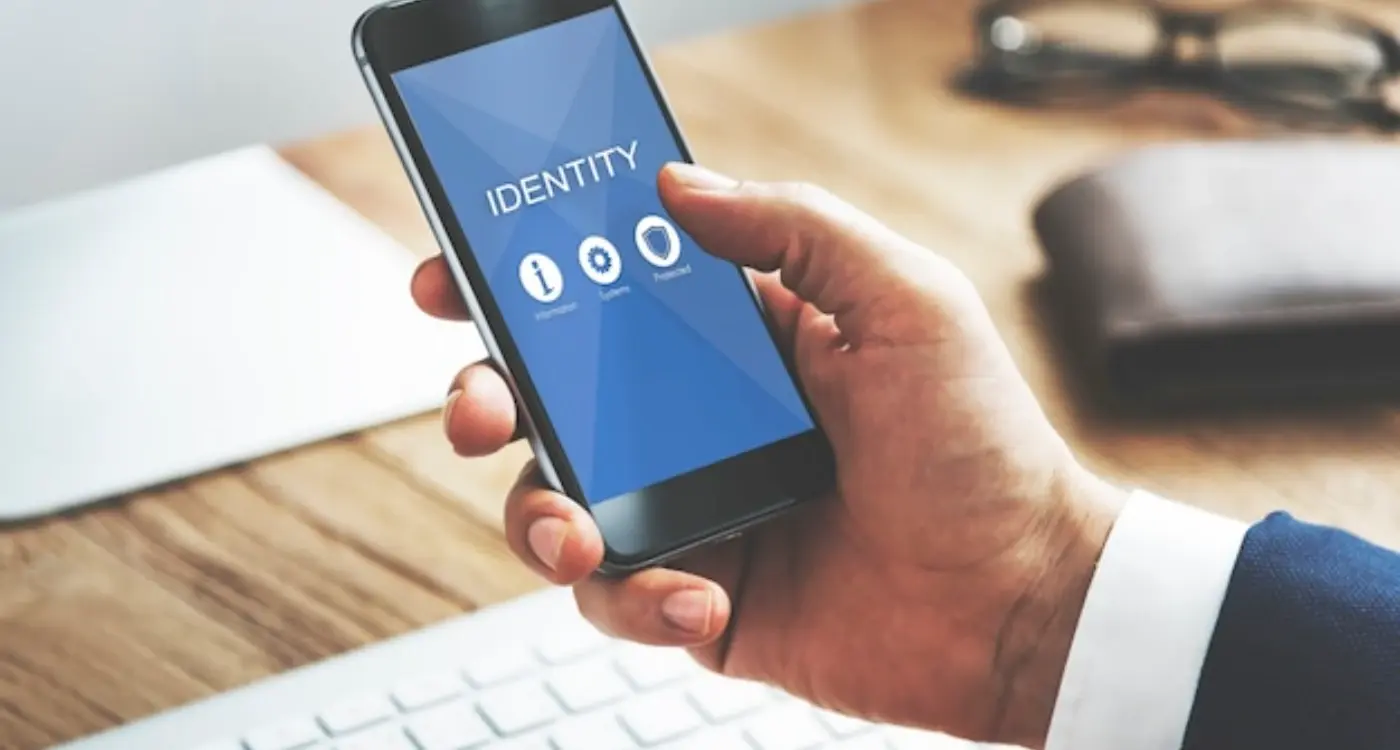Which Security Standards Do Mobile Apps Need To Follow?
A popular fitness tracking mobile app discovered hackers had accessed millions of users' personal health data, including workout locations and daily routines. The breach happened because the app wasn't following basic security standards—and it cost the company millions in fines and lost users. This scenario plays out more often than most people realise, which is why understanding mobile app security standards isn't just smart business; it's absolutely necessary.
When we talk about mobile app security, we're really talking about protecting three things: your users' data, your business reputation, and your legal standing. Every mobile app handles some form of data, whether that's user profiles, payment information, or location tracking. Without proper security measures, this data becomes vulnerable to cybercriminals who are constantly looking for weak spots.
Security isn't a feature you add at the end—it's the foundation everything else is built on
The challenge many app developers face is understanding which compliance requirements apply to their specific situation. Different industries have different rules, and cybersecurity frameworks can seem overwhelming at first glance. But here's the thing: mobile app security doesn't have to be complicated if you know what standards to follow from the start. Getting this right protects everyone involved and saves you from costly mistakes down the road.
Understanding Basic Mobile App Security
Mobile app security isn't just about keeping hackers out—it's about protecting your users' trust and your business reputation. When you're building an app, security needs to be baked in from day one, not sprinkled on top like an afterthought.
The basics start with understanding what you're actually protecting. User data is the obvious one, but there's also your app's code, the communication between your app and servers, and the device itself. Each of these areas has its own vulnerabilities and requires different approaches to keep them secure.
The Three Pillars of Mobile App Security
- Data encryption—scrambling information so only authorised people can read it
- Secure authentication—making sure users are who they say they are
- Code protection—preventing tampering with your app's functionality
What catches many developers off guard is that mobile security is different from web security. Mobile apps live on devices you don't control, connected to networks you can't trust, used by people in locations you can't predict. This creates unique challenges that desktop applications simply don't face.
The good news? Most security issues stem from common mistakes that are entirely preventable once you know what to look for.
Data Protection and Privacy Laws
When you're building a mobile app, data protection laws aren't just suggestions—they're legal requirements that can make or break your business. The rules around how you collect, store, and use people's personal information have become much stricter over the years, and mobile apps are right in the spotlight.
The biggest player in this space is GDPR (General Data Protection Regulation), which affects any app that processes data from EU citizens—even if your company is based elsewhere. Then there's CCPA (California Consumer Privacy Act) for apps dealing with California residents, and various other regional laws popping up around the world. What makes this particularly tricky for mobile app development is that these laws weren't written with apps in mind; they cover all digital services.
Key Requirements You Must Follow
- Get clear consent before collecting any personal data
- Allow users to request their data be deleted
- Provide transparent privacy policies in plain English
- Report data breaches within specific timeframes
- Implement data protection by design from day one
- Appoint a Data Protection Officer if required
Always assume your mobile app will need to comply with multiple data protection laws simultaneously. Design your privacy controls to meet the strictest requirements from the start—it's much easier than retrofitting compliance later.
The penalties for getting this wrong aren't just financial (though they can be massive)—you could face app store removal, legal action, and serious damage to your reputation. But here's the thing: good data protection actually builds trust with users, which means better retention and more downloads in the long run.
Industry-Specific Compliance Requirements
Different industries have their own special rules that mobile apps must follow—and breaking these can land you in serious trouble. If you're building an app for healthcare, finance, or education, you can't just wing it and hope for the best.
Healthcare Apps and HIPAA
Healthcare apps dealing with patient information need to comply with HIPAA (Health Insurance Portability and Accountability Act) in the United States. This means protecting patient data like it's made of gold. Any app that stores, transmits, or processes health information must encrypt data, control who can access it, and keep detailed logs of who's been looking at what.
Financial Services Regulations
Banking and fintech apps face strict requirements under regulations like PCI DSS (Payment Card Industry Data Security Standard) and PSD2 in Europe. These apps must use strong encryption, secure authentication methods, and regular security testing. Even simple payment features trigger these requirements.
Educational apps collecting children's data must follow COPPA (Children's Online Privacy Protection Act) in the US and similar laws elsewhere. This means getting parental consent before collecting any personal information from kids under 13.
- Healthcare: HIPAA compliance for patient data protection
- Finance: PCI DSS for payment processing and PSD2 for banking services
- Education: COPPA for children's privacy protection
- Government: FedRAMP for federal agency applications
The key is identifying which regulations apply to your app early in development—retrofitting compliance later costs far more than building it in from the start.
Core Cybersecurity Frameworks for Mobile Apps
When building mobile apps, developers need proper guidelines to keep user data safe. That's where cybersecurity frameworks come in—they're like instruction manuals that tell you exactly what security measures your app needs. The most popular ones are NIST (National Institute of Standards and Technology) and ISO 27001, which provide step-by-step approaches to protecting information.
NIST Framework Benefits
The NIST framework breaks down security into five simple functions: Identify, Protect, Detect, Respond, and Recover. For mobile app development, this means identifying what data needs protection, putting safeguards in place, spotting threats quickly, responding to attacks, and having backup plans. It's particularly useful because it doesn't require expensive certifications—you can implement it yourself.
NIST provides a common language for cybersecurity that makes it easier for development teams to communicate about security risks and solutions
ISO 27001 for Mobile Apps
ISO 27001 takes a more formal approach with detailed compliance requirements. This framework requires regular audits and documentation, making it perfect for apps handling sensitive information like healthcare or financial data. The certification process can take months, but it proves to clients and partners that your mobile app meets international security standards. Both frameworks help developers create more secure apps whilst meeting various industry compliance requirements.
Authentication and Access Control Standards
Getting authentication right is one of those things that sounds simple but can quickly become complicated. We're talking about making sure the right people can access your app whilst keeping the wrong people out—and doing it in a way that doesn't frustrate your users.
The gold standard here is OAuth 2.0, which most developers use for third-party authentication. Think logging in with Google or Facebook accounts. It's secure, widely supported, and users are already familiar with it. For apps handling sensitive data, you'll want to implement multi-factor authentication (MFA) too; this adds an extra layer by requiring something the user knows (password) and something they have (phone for SMS codes).
Key Standards to Follow
- Use OAuth 2.0 for third-party authentication
- Implement proper session management with secure tokens
- Store passwords using strong hashing algorithms like bcrypt
- Set up account lockout policies after failed login attempts
- Use biometric authentication where appropriate (fingerprint, face recognition)
Session management is another area where things can go wrong fast. Tokens should expire after reasonable periods, and you need secure logout functionality that properly invalidates sessions. Don't store sensitive authentication data on the device—use secure token storage instead.
Remember, good authentication feels invisible to legitimate users but creates a fortress against unauthorised access.
App Store Security Requirements
Getting your mobile app onto the App Store or Google Play isn't just about having great features—both platforms have strict security requirements that your app must meet. Apple and Google take user safety seriously, which means they've built comprehensive review processes to catch potential security issues before apps go live.
The App Store requires all apps to use secure coding practices and proper encryption for sensitive data. You'll need to implement secure authentication methods and protect user information both in transit and at rest. Google Play has similar requirements but also runs automated security scans that check for known vulnerabilities and malicious code patterns.
Data Handling Requirements
Both app stores are particularly strict about how you collect, store, and share user data. Your app must clearly explain what data it collects and why—no sneaky background tracking allowed. You'll also need to implement proper consent mechanisms and give users control over their information.
Technical Security Standards
Code obfuscation, secure network connections, and proper API security are non-negotiable. The stores also check that your app doesn't contain backdoors or unauthorised access points that could compromise user devices.
Always test your app with the official security scanning tools provided by Apple and Google before submission—catching issues early saves weeks of back-and-forth during the review process.
Common Security Vulnerabilities to Address
After years of working with mobile apps, I've seen the same security problems crop up again and again. The thing is, most of these vulnerabilities are completely preventable if you know what to look for. Let me walk you through the biggest culprits that could leave your app wide open to attack.
Data Storage and Transmission Issues
One of the most frequent mistakes I see is storing sensitive information directly on the device without proper encryption. User passwords, payment details, and personal data should never sit there in plain text—yet you'd be surprised how often this happens. Then there's the transmission side of things; sending data over unsecured connections is like shouting your secrets across a crowded room.
Authentication Weaknesses
Weak authentication systems are another massive red flag. This includes everything from allowing simple passwords to failing to implement proper session management. Many apps don't even validate user sessions correctly, which means someone could potentially hijack another person's account.
- Insecure data storage on device
- Unencrypted data transmission
- Weak password requirements
- Poor session management
- Insufficient input validation
- Insecure API endpoints
- Lack of code obfuscation
- Missing certificate pinning
The good news? Each of these vulnerabilities has well-established solutions. It's just about making security a priority from day one rather than an afterthought.
Conclusion
Building a secure mobile app isn't just about ticking boxes—it's about protecting your users and your business. Throughout this guide, we've covered the main security standards your mobile app needs to follow, from basic security practices to industry-specific compliance requirements. The landscape might seem overwhelming at first, but breaking it down into manageable pieces makes the whole process much clearer.
Your mobile app will need to meet different standards depending on what it does and who uses it. Healthcare apps must follow HIPAA; financial apps need PCI DSS compliance; apps handling personal data require GDPR protection. Meanwhile, cybersecurity frameworks like OWASP provide the foundation for secure coding practices that every developer should know.
Don't forget that app stores have their own security requirements too—Apple and Google both run strict checks before approving apps. Getting rejected for security issues can delay your launch by weeks or months, so it's worth getting these right from the start.
The key takeaway? Start thinking about security early in your development process, not as an afterthought. Work with experienced developers who understand these compliance requirements and can build security into your app's DNA. Your users trust you with their data—make sure you're worthy of that trust.
Share this
Subscribe To Our Learning Centre
You May Also Like
These Related Guides

Can I Launch My Mobile App Globally Without A Legal Team?

Do I Really Need Terms of Service for My App?



